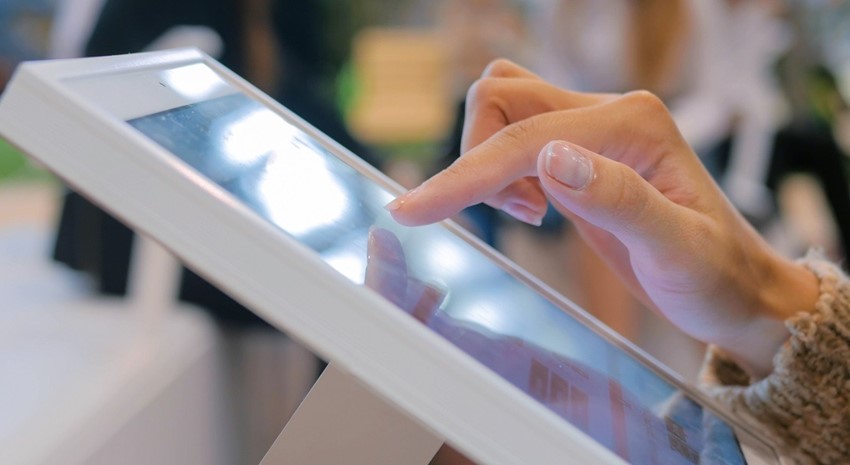Self-Managed Kiosks Give Retailers and Consumers a Touchless Experience

The pandemic has forced businesses to shift focus and tactics with everything from inventory and supply chain management to in-store consumer safety—but it has also sped up with was already coming. One example: self-managed kiosks.
We’ve actually been using them for years in the form of ATMs, airport check-in, kiosks at tables in restaurants for viewing menus, ordering, and paying the check—but even old-school snack vending machines were an early form of the self-managed kiosk. The basic principle of today’s kiosks is the same, but they’ve come a long way and are now a customer behavior norm due to the pandemic and demand for touchless shopping.
The big challenge for kiosks is to provide an experience that allows customers to shop like they did in the past…but without as much human interaction. This preference is not only due to safety concerns, but also because customers want a more expedited experience. For example, if they walk into your store already knowing what they want or if they’re in a hurry, a kiosk can help them locate an item quickly.
There are even more ways kiosks can be used to not only improve the customer experience, but also to help you sell more. For example, a customer finds a shirt that’s perfect and wants to see it in other colors, but they don’t want to have to try each color on since they know the shirt fits. They can use a kiosk to simulate that shirt on their body, but in different colors. Kiosks can also be used to show how a piece of clothing will look with a specific accessory, and with tools like mirror artificial intelligence (AI), customers can “try on” shoes as they walk by a shoe store.
Another advantage of kiosks is reducing the pressure to buy. Let’s face it: most of us don’t relish the idea of a salesperson hanging around, even if their intention is to be helpful. Kiosks allow the customer to shop at their leisure, which studies show results in larger, better quality purchases that customers are truly happy with—and less inclined to return or exchange.
With the coronavirus pandemic, some businesses have already jumped on the kiosk bandwagon in a big way. Those that have historically provided ways to view their products—like florists—have augmented those interactions by showing how arrangements would look in specific surroundings. Bakeries provide kiosks that allow customers to order customized cakes for birthdays and other events. Vending machines have advanced well beyond chips and candy bars, offering everything from basic groceries to automobiles!
Currently, it’s important to think creatively. Just about any retailer should consider how kiosks could improve customer experiences and increase customer loyalty. Take real estate, for example. A kiosk set up outside a home for sale could take buyers on a virtual tour, provide more information including dates/times for open houses, and allow buyers to set an appointment to see the property. Taking it a step further, the kiosk could gather information from the buyer and provide a more personalized experience, highlighting areas of the home that are of interest to the buyer, and so forth.
So, what are the benefits of kiosks to the retailer? If happy, satisfied, loyal customers aren’t enough, consider this:
- Kiosks free up resources for other areas where human interaction is more crucial
- Scheduling resources will be easier and more accurate
- Software used for kiosks can integrate with customer loyalty solutions and can gather and provide crucial data for other marketing efforts
So, will kiosks replace humans? No. There will always be a need for human interaction—even if it’s just to make sure the kiosks are working as promised. The one thing to avoid is a poor experience that frustrates customers because your kiosks are not working or are difficult to use (for example, when the sun shines on the screen of an outdoor kiosk). Remember: regardless of technology or process, the customer experience should be your first priority.
If you’d like more ideas for how to incorporate self-service kiosks and other contactless technologies like payments and curbside pickup, talk to the retail experts at ArcherPoint, and watch our recent webcast, Self-Managed Kiosks – Retail’s Digital Response to COVID-19.
